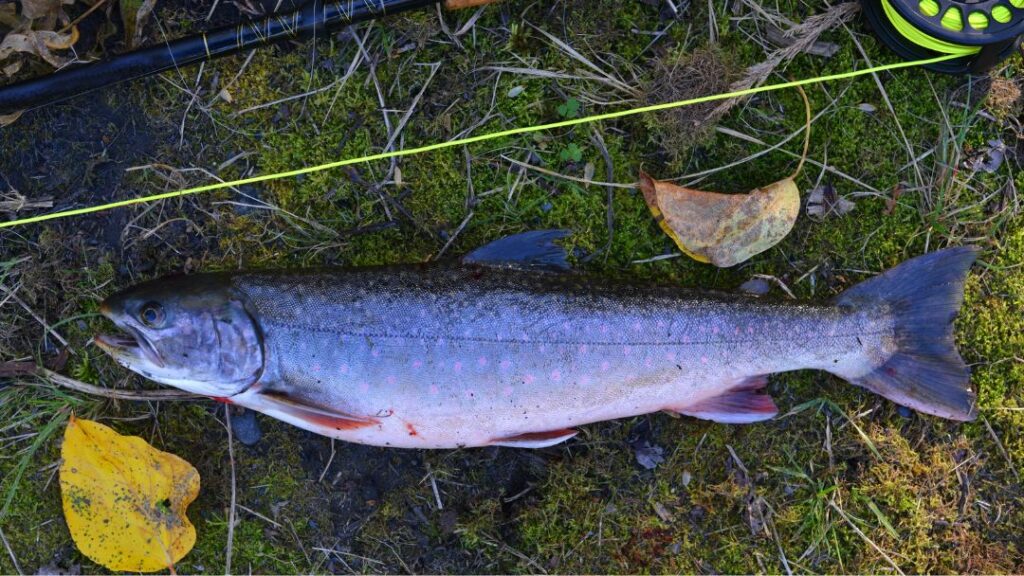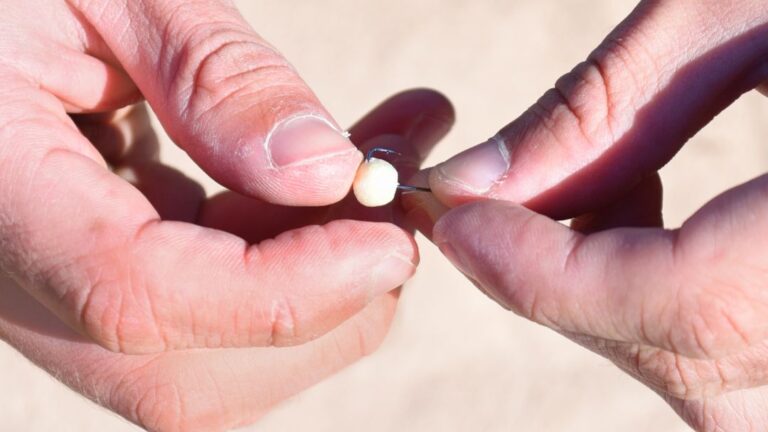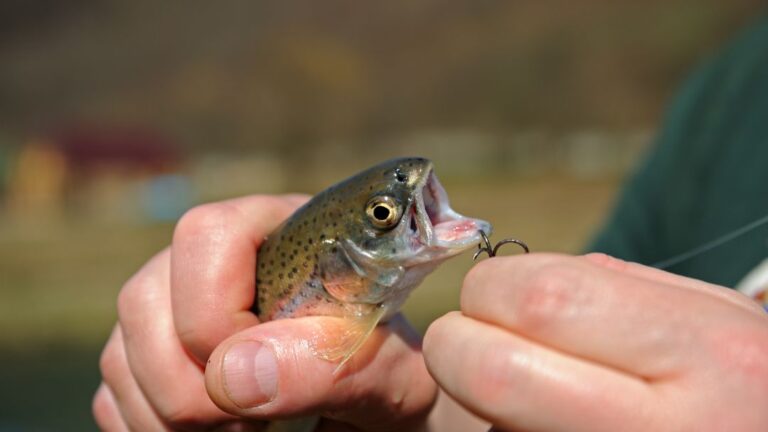Dolly Varden Trout Fishing Guide: How to Identify and Catch with Proven Tips
Dolly Varden is a fish species that can be identified by its distinct appearance and can be caught using certain tips and techniques. We will explore how to accurately identify Dolly Varden and provide useful tips for successful fishing.
Whether you are a novice angler or an experienced fisherman, understanding the characteristics of Dolly Varden and learning the right methods to catch them can greatly enhance your fishing experience. So, let’s dive in and discover the fascinating world of Dolly Varden!
Understanding Dolly Varden: A Versatile And Beautiful Fish
Dolly Varden is a fish species that holds both versatility and beauty. If you are an angler or a nature enthusiast, familiarizing yourself with the characteristics and habits of the Dolly Varden can unlock incredible fishing experiences.
This article aims to provide you with a comprehensive overview of Dolly Varden, including its habitat, importance in the ecosystem, and why it is highly sought after by anglers.
Overview Of Dolly Varden’s Characteristics And Habitats
Dolly Varden, scientifically known as Salvelinus malma, is a member of the Salmonidae family, known for its stunning colors and patterns. These fish typically have a slender body, varying in color from olive-green to bluish-black on the dorsal side and fading to silver or white on the ventral side. Their sides are often adorned with vibrant spots that can range from red to orange.
Dolly Varden primarily inhabits coldwater ecosystems, including freshwater rivers, streams, and lakes. They are native to the coastal areas of the North Pacific, with notable populations found in Alaska, British Columbia, and Siberia. These fish thrive in clear, oxygen-rich waters, allowing them to sustain their metabolism and vibrant colors.
Importance Of Dolly Varden In The Ecosystem
Dolly Varden plays a crucial role in the ecosystem as a keystone species. They occupy various trophic levels, as both predators and prey, contributing to the overall balance and health of the aquatic food chain. As opportunistic feeders, they consume a diverse range of prey, including insects, small fish, and crustaceans, regulating the population of these organisms within their habitat.
Moreover, Dolly Varden serves as an indicator species, reflecting the overall health of their ecosystem. Their sensitivity to environmental changes, such as water temperature and pollution, makes them valuable indicators for researchers and conservationists.
By monitoring the population and behavior of Dolly Varden, experts can assess the ecological conditions and implement necessary measures to protect and restore fragile aquatic ecosystems.
What Makes Dolly Varden A Popular Target For Anglers
The striking appearance and sporting nature of Dolly Varden make them a favorite among avid anglers. Their feisty temperament and acrobatic behavior when hooked provide thrilling angling experiences.
Anglers appreciate the challenge of catching Dolly Varden due to their ability to put up a fight and “test” their fishing skills.
In addition to their spirited nature, Dolly Varden are sought after for their delicious flavor. The flesh of these fish is often considered succulent and mild, making them a prized catch for both sport and culinary purposes.
Their popularity as a game fish has spurred various regulations and management efforts to ensure sustainable fishing practices and conserve their populations for future generations.

Identifying Dolly Varden: Key Physical Features And Identification Tips
When it comes to identifying Dolly Varden, there are certain key physical features and identification tips that can help you distinguish this beautiful fish from others.
From their distinctive color patterns and variations to unique fin characteristics, understanding these traits will make it easier for you to identify and differentiate Dolly Varden from similar fish species.
Distinctive Color Patterns And Variations
One of the most striking features of Dolly Varden is their unique color patterns, which can vary depending on their habitat and life stage. These fish are characterized by a predominantly olive or greenish-brown body, with vibrant yellow or pink spots scattered across their skin.
The coloration is often more pronounced on their back and sides, gradually fading towards their belly. This distinctive color pattern helps Dolly Varden blend in with their surroundings, making them difficult to spot in certain environments.
Moreover, Dolly Varden undergoes significant color changes during different seasons and reproductive phases. During spawning, the males develop a deeper red or orange hue on their lower body, creating a stark contrast to their usual coloration.
This change in coloration is an adaptation to attract potential mates and is a key indicator of the fish’s reproductive status. In contrast, females tend to retain their typical coloration throughout the year.
Unique Fin Characteristics For Easy Identification
In addition to their distinct color patterns, Dolly Varden can also be identified by their unique fin characteristics. Two important features to look out for are their elongated dorsal fin and their colorful pectoral fins.
The dorsal fin of Dolly Varden extends further back than that of other salmonid species, giving them a slightly more elongated appearance. This elongation is particularly noticeable in mature individuals.
Another distinguishing feature is the vibrant coloration of their pectoral fins. Unlike other fish species, which usually have translucent or dull-colored fins, Dolly Varden has brightly colored pectoral fins with shades of red, orange, or pink.
These strikingly colored fins add to the overall beauty and uniqueness of this species, making them easily distinguishable.
How To Differentiate Dolly Varden From Similar Fish Species
While it is relatively easy to identify Dolly Varden based on their distinctive color patterns and unique fin characteristics, it is essential to differentiate them from similar fish species that share their habitat.
One common confusion arises between Dolly Varden and Arctic Char, as they both exhibit similar color patterns and body shapes. However, a key distinguishing feature is the presence of light-colored spots on the head and gill covers of Arctic char, which are absent in Dolly Varden.
Additionally, Arctic chars often have more rounded caudal fins compared to the slightly forked caudal fins of Dolly Varden.
Another species that can be mistaken for Dolly Varden is the Bull trout, especially when they are in their non-spawning phase. To differentiate between the two, look for a distinct white leading edge on the lower caudal fin lobe of Dolly Varden, which is absent in Bull trout. Bull trout also lack the bright pectoral fin coloration characteristic of Dolly Varden.
By paying attention to these subtle distinctions and familiarizing yourself with the key physical features and identification tips, you will be well-equipped to accurately identify Dolly Varden and avoid any confusion with similar fish species.
Best Techniques For Catching Dolly Varden: Proven Tips And Tricks
When it comes to catching Dolly Varden, having the right techniques can make all the difference in your fishing success. In this section, we will explore some of the best techniques for catching Dolly Varden, including choosing the right fishing gear and bait, utilizing effective fishing methods and strategies, and understanding Dolly Varden’s behavior for successful catches.
By following these proven tips and tricks, you’ll greatly increase your chances of reeling in these beautiful and exciting fish.
Choosing The Right Fishing Gear And Bait For Dolly Varden
Choosing the right fishing gear and bait is crucial when targeting Dolly Varden. Here are some key considerations:
- Invest in a quality fishing rod and reel combo that is suitable for freshwater fishing. Look for a medium to medium-heavy rod with a fast action, paired with a durable reel that has a smooth drag system.
- Opt for a fishing line with a test strength between 6-12 pounds, depending on the size of the fish you are targeting and the fishing conditions.
- Select the appropriate bait and lures based on the feeding habits of Dolly Varden. They are known to feed on a variety of prey, including insects, small fish, and even eggs. Consider using artificial lures such as spinners, spoons, and jigs, as well as live bait like worms, salmon eggs, or small fish.
- Ensure you have a good assortment of hooks in different sizes and types, such as single hooks, treble hooks, and circle hooks, to increase your chances of hooking a Dolly Varden.
Effective Fishing Methods And Strategies
When targeting Dolly Varden, employing effective fishing methods and strategies can greatly enhance your chances of success. Here are some techniques to consider:
- Cast your bait or lure near structures such as fallen trees, rocks, or shallow areas, as Dolly Varden tend to ambush their prey from hiding places.
- Try trolling with a lure or bait at a slow to medium speed, covering a larger area of the water and enticing Dolly Varden to strike.
- Experiment with different retrieval techniques, such as steady reeling, jerking, or pausing, to mimic the movements of injured prey and spark the interest of these aggressive fish.
- Pay attention to the water temperature, as Dolly Varden prefers cooler waters. Consider fishing early in the morning or during cooler parts of the day.
Understanding Dolly Varden’s Behavior For Successful Catches
To increase your chances of success, it’s important to understand the behavior of Dolly Varden. Here are some key observations:
| Behavior | Implications for Fishing |
|---|---|
| Consider fishing near areas where salmon are spawning or running, as Dolly Varden often feeds on salmon eggs or injured fish. | Focus on fishing in specific areas where Dolly Varden are known to reside, such as deep pools or areas with ample cover. |
| Dolly Varden are opportunistic feeders | Take advantage of a variety of bait and lure options to maximize your chances of enticing a bite. |
| Dolly Varden is territorial | Focus on fishing in specific areas where Dolly Varden is known to reside, such as deep pools or areas with ample cover. |
By understanding these behaviors and tailoring your fishing approach accordingly, you’ll significantly increase your likelihood of hooking a Dolly Varden.
Where To Find Dolly Varden: Exploring Ideal Fishing Spots
When it comes to fishing for Dolly Varden, knowing where to find them is key to a successful angling experience. These beautiful and feisty fish can be found in various locations, each with its own unique charm.
Overview Of Dolly Varden Distribution And Preferred Habitats
Dolly Varden is widely distributed across different regions, making it accessible to anglers seeking a thrilling fishing adventure. These fish are mostly found in freshwater rivers, streams, and lakes, as well as brackish waters near the coast.
They prefer cold, clean, and oxygen-rich environments, commonly inhabiting areas with rocky bottoms or deep pools. Their distribution can vary depending on the specific subspecies, but they are often abundant in North America, especially in Alaska, British Columbia, and the Pacific Northwest.
Popular Fishing Locations For Dolly Varden
If you’re looking to target Dolly Varden, there are several renowned fishing locations that never disappoint. These spots offer a combination of natural beauty and excellent fishing opportunities, ensuring an unforgettable experience:
1. Kenai Peninsula, Alaska
The Kenai Peninsula in Alaska is a dream destination for Dolly Varden enthusiasts. Its breathtaking landscapes and pristine waters make for a perfect fishing getaway. The Kenai River, in particular, is known for its impressive Dolly Varden population, attracting anglers from all over the world.
2. Russian River, Alaska
Located on the Kenai Peninsula, the Russian River is famous for its annual salmon runs, which also attract Dolly Varden. This scenic river offers excellent fishing opportunities, especially during the summer months when these fish gather to feed on salmon eggs.
3. Nushagak River, Alaska
The Nushagak River is a prime fishing destination in southwestern Alaska, famous for its abundant salmon and Dolly Varden populations. Anglers can enjoy a thrilling fishing experience while surrounded by breathtaking wilderness.
4. Great Bear Rainforest, British Columbia
The Great Bear Rainforest in British Columbia is not only a haven for various wildlife species but also a hotspot for Dolly Varden fishing. Its remote and untouched rivers provide an exceptional angling experience, where you can immerse yourself in nature’s wonders while targeting these vibrant fish.
Factors To Consider When Selecting A Fishing Spot For Dolly Varden
When selecting the ideal fishing spot for Dolly Varden, there are a few factors to consider to maximize your chances of success:
- Water Temperature: Dolly Varden thrives in cooler waters, so target areas with temperatures ranging from 50°F to 60°F.
- Food Sources: Look for locations with abundant food sources, such as salmon runs, as Dolly Varden often gathers in these areas to feed.
- Structure: Opt for spots with rocky bottoms or deep pools, as Dolly Varden prefers these habitats for shelter and ambush tactics.
- Accessibility: Consider the ease of access to your chosen fishing spot, ensuring it is safe and convenient for you and your gear.
- Local Expertise: Seek advice from local fishing guides or experienced anglers who are familiar with the area. Their knowledge can significantly increase your chances of finding productive fishing spots.
Conservation And Fishing Regulations: Responsible Practices For Dolly Varden Anglers
Conservation and responsible fishing practices are crucial when it comes to protecting the Dolly Varden population. As anglers, it is our responsibility to ensure the long-term sustainability of this beautiful species.
By adopting sustainable fishing practices, we can help preserve their habitat and secure the future generations’ ability to experience the thrill of catching Dolly Varden.
Fishing Regulations And Restrictions For Dolly Varden
Local fishing regulations and restrictions are in place to safeguard the Dolly Varden population and maintain the balance of the ecosystem. Compliance with these regulations is essential to protect the species from overfishing and ensure their survival.
Understanding and adhering to the fishing regulations specific to your area will help preserve the Dolly Varden population for future generations to enjoy.
Tips For Catch-and-release Fishing To Protect Dolly Varden Population
Catch-and-release fishing is a valuable practice that can significantly contribute to the conservation of Dolly Varden. By following these tips, you can minimize harm to the fish and increase their chances of survival:
- Use barbless hooks to avoid causing unnecessary injury to the fish. Barbless hooks are easier to remove and reduce the stress on the fish during the release process.
- Handle the fish with wet hands or gloves to protect their delicate skin and scales. Avoid touching the gills, as they are particularly sensitive.
- Minimize the time the fish spends out of the water. Keep it submerged as much as possible while unhooking and releasing it. This will prevent the fish from experiencing excessive stress and oxygen deprivation.
- If the fish is deeply hooked or injured, consider cutting the line close to the hook instead of attempting to remove it. This will give the fish a better chance of survival by avoiding further harm.
- Revive the fish properly before releasing it. Gently hold it upright in the water, facing the current, so that oxygen-rich water can pass through its gills. Allow the fish to regain its strength before letting it swim away.
By following these catch-and-release practices, we can contribute to the preservation of the Dolly Varden population. Our actions today have a direct impact on the future of this remarkable species.
Conclusion
Identifying and catching Dolly Varden can be an exciting adventure for anglers. By familiarizing yourself with their distinct characteristics such as their vibrant coloration and unique body shape, you can easily distinguish them from other trout species.
Applying effective techniques like using the right bait and lures, as well as understanding their preferred habitat, will greatly increase your chances of reeling in these elusive fish.
So, next time you’re out on the water, remember these tips and get ready for an extraordinary fishing experience with Dolly Varden. Happy angling!



